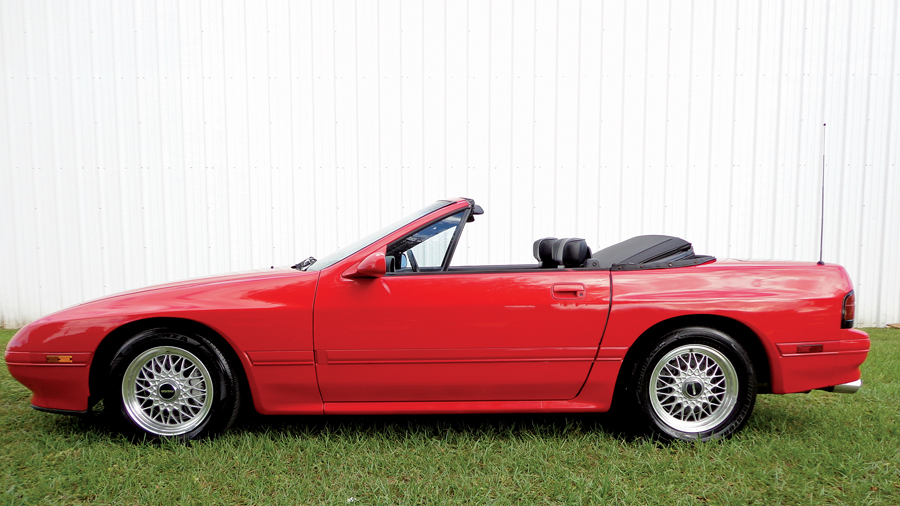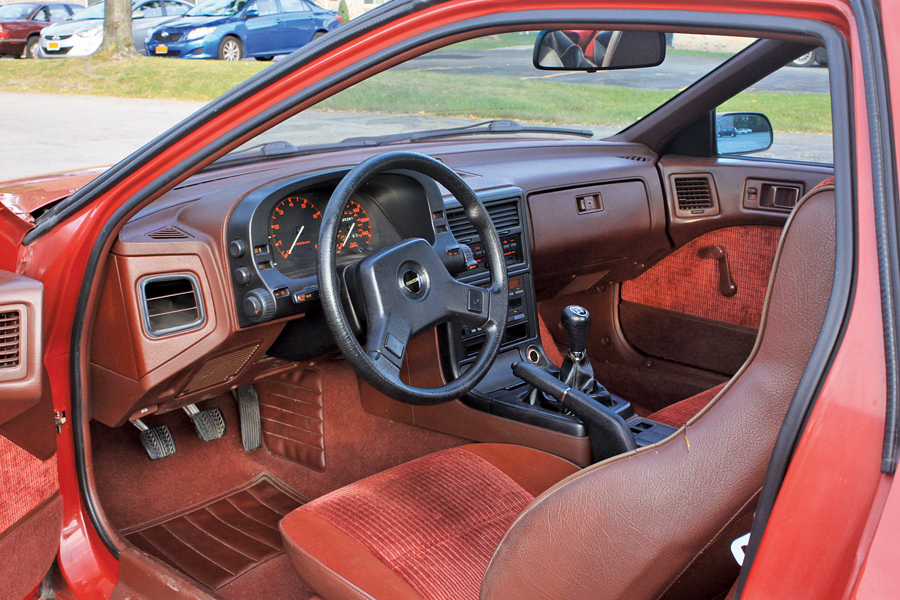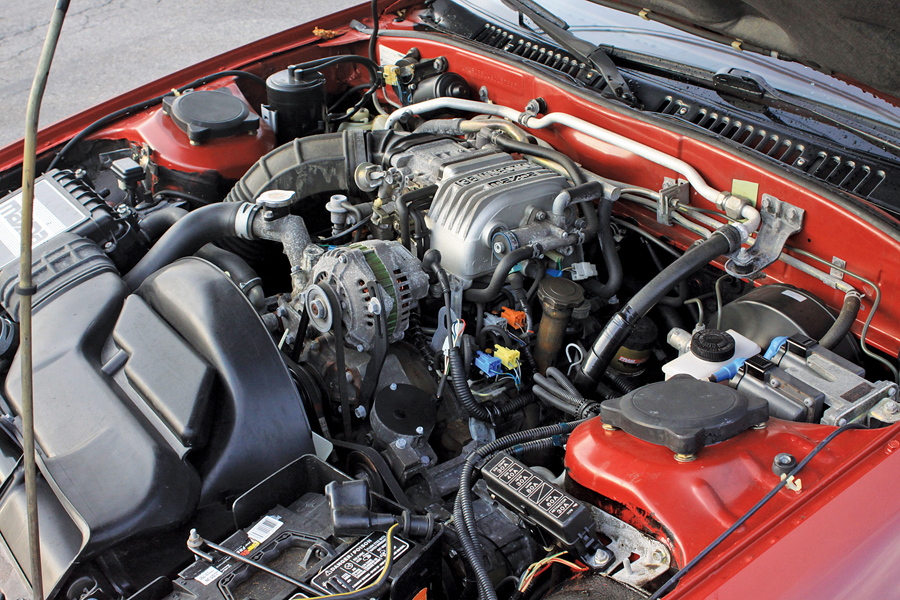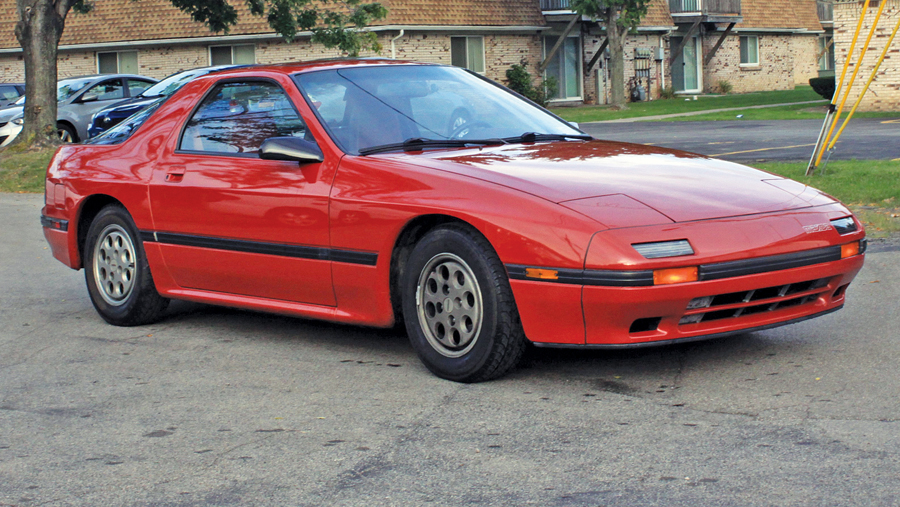Pity the second-generation Mazda RX-7. The FC, as it’s known to rotary cognoscenti, has always trailed its older brothers in desirability — if not in performance. And while that’s not strictly fair, it has kept prices attractively low on a car that has a lot of enjoyment potential.
Mazda brought out the first RX-7 in 1978, and it was a dramatic departure from their admirable line of rotary-engine coupes and sedans of the 1970s. But the RX-7 was also a return to a compelling sports car formula that had been promised with the original Cosmo 110S of the 1960s. The new RX-7 offered comparable performance to the Alfa Spider and the Datsun 280ZX of the same year, but it was priced 20% lower than those competitors.
A risky redesign
The first generation of the RX-7 lasted through the 1984 model year, selling 471,018 units and making Mazda into a relevant automaker in America. But when it came time to update the model, Mazda departed from the sleek directness of the first generation RX-7 and took a big risk.
By the mid-1980s, Porsche had made a success of the water-cooled 924 and 944 using much the same formula as the RX-7, but at a dramatically higher price. The second-generation RX-7 borrowed the rounded-fender styling cues from the 924 in an attempt to move upmarket. Although the RX-7 continued to sell very well, the new design never had the lasting appeal of the original.
The second-gen cars were built from 1985 through 1991.
Mazda introduced the convertible RX-7 in 1988 and kept it in production through the end of the second generation in 1991. To tell the truth, the ragtops are the most attractive of the second-generation cars. The convertible somehow avoids the overweight appearance of the coupe.
Performance counts
Before you dismiss the second-gen RX-7, take a moment and consider its merits. This car is a better performer than the original. The most powerful of the first-generation cars made 135 horsepower. The second generation boosted that to 146 horses for the normally aspirated 13B rotary — and up to 182 horsepower for the turbocharged version. Those numbers were bumped up to 160 horsepower for the 13B and 200 horsepower for the turbo in 1990.
There were more improvements under the skin, starting with an independent rear suspension that made the FC less prone to oversteer than the original RX-7 with its solid rear axle. The second-generation RX-7 also got rack-and-pinion steering and four-wheel disc brakes as standard equipment.
The RX-7 Turbo II was a mid-year addition in 1986. Armed with a twin-scroll turbo that eliminated lag, the rotary engine was now a serious screamer with competitive power and a 7,000-rpm redline. As mentioned, the Turbo II got an additional boost to 200 horsepower for the final two years of production.
Buying an RX-7
Don’t plan on hitting the auction circuit for a second-gen RX-7, unless you mean the dealers’ used-car auction. Only two or three second-gen RX-7s turn up in the SCM Platinum Auction Database every year, and most of those sell under $5,000. If you search back 10 years, the prices are the same. As a result, with few exceptions, the second-generation RX-7 is found on Craigslist.
Bring your best used-car game with any RX-7. Look for overall condition and watch out for cars that boy racers molested over the years, especially if you’re considering a turbocharged model. Given that the youngest of these cars is now 25 years old, and rotaries are expensive to repair, investing in a pre-purchase inspection by a shop with credible knowledge of rotary engines is critical.
The 1990–91 cars are more powerful, more refined and generally better. Convertibles may have had a gentler life than coupes, and will tend to cost a little bit more money, but not a lot. Be patient and wait for the best one you can find.
Although the convertible was never turbocharged for the United States, there are some Japanese Domestic Market right-hand-drive turbo convertibles out there in the world. Track down one of those if you want a unicorn.
Above all, don’t talk yourself into paying a price that is wildly out of range for the breed. You’ll never get it back. Cash appreciation on an RX-7 is negligible. There were 272,027 of the second-gen cars produced — on top of nearly half a million of the first generation.
If you want an RX-7 with upside potential, you need to be looking at the much rarer, faster and prettier third generation, with fewer than 70,000 made.
The best reason to buy a second-generation RX-7 is to drive a pleasant rotary-engine car with good performance and only a small slice of your savings invested in the vehicle. A little more time is all that’s required for this affordable classic. ♦



